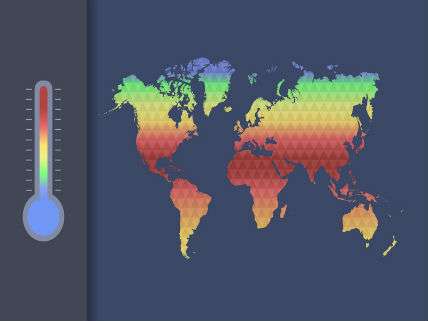Global Warming Prediction 30 Years Later: How Is It Faring?
If you preach to choir, at least try to be fair in your sermon.

The skeptical folks over at Real Science are taking a stroll down memory lane to see how climatologist James Hansen's famous 1986 predictions about future global temperature trends have panned out 30 years later. As evidence, the Real Science shows a couple of quotations from a June 12 Associated Press story which cites Hansen as predicting in testimony before a U.S. Senate committee that global temperatures should be nearly 2 degrees higher in 20 years, "which is about the warmest the earth has been in the last 100,000 years." Real Science notes that Earth warmed by only about 0.2 degrees Celsius between June 1986 and June 2006. Off by a factor of ten!
But is that the whole story? I dove into the WABAC Machine known as Nexis and dredged up a couple of other news reports recounting Hansen's testimony. A longer June 1986 UPI story reported, "Unless steps are taken to control the problem, temperatures in the United States in the next decade will range from 0.5 degrees Celsius to 2 degrees higher than they were in 1958, said James Hansen, director of NASA's Goddard Institute for Space Studies." That's a much bigger range than between 1986 and 2006.
So how did the average U.S. temperature change in the 50 years after 1958? According to the U.S. Global Change Research Program report in 2009, "U.S. average temperature has risen more than 2ºF over the past 50 years." Two degrees Fahrenheit is just over 1.1 degrees Celsius, which is within the spread of increased temperatures predicted by Hansen. With regard to global average temperatures, the Intergovernmental Panel on Climate Change's Fourth Assessment Report in 2007 noted that "the rate of warming averaged over the last 50 years (0.13°C ± 0.03°C per decade) is nearly twice that for the last 100 years." That implies an overall increase between 1958 and 2006 of 0.65 degree Celsius—at the low end of Hansen's predictions. The University of Alabama at Huntsville's satellite temperature data series (since 1979) is increasing at 0.12 degree Celsius per decade which, if run back backwards, implies a five decade global temperature increase of 0.6 degree Celsius; again, at the low end of Hansen's projections.
First, it does no good for the antagonists in the scientific debate over man-made climate change to mischaracterize the views of their opponents. On the other hand, the lower rate of temperature increase suggests that most computer climate models relied upon by Hansen are running far too hot, and future temperature increases may not portend catastrophic changes by the end of this century.


Show Comments (200)